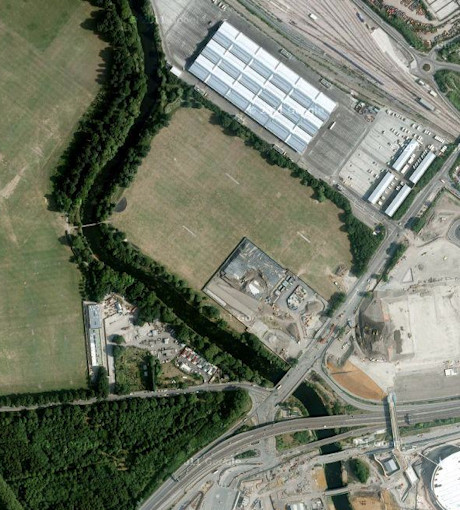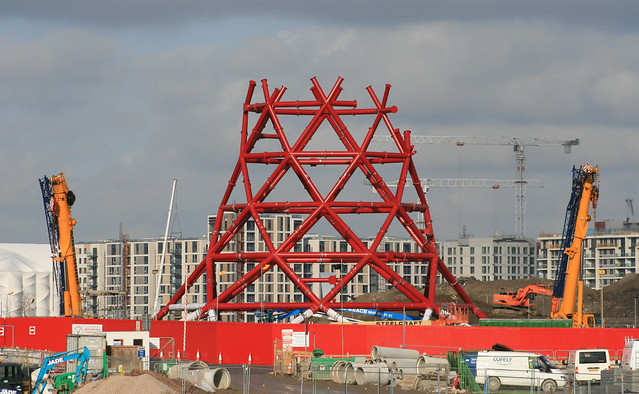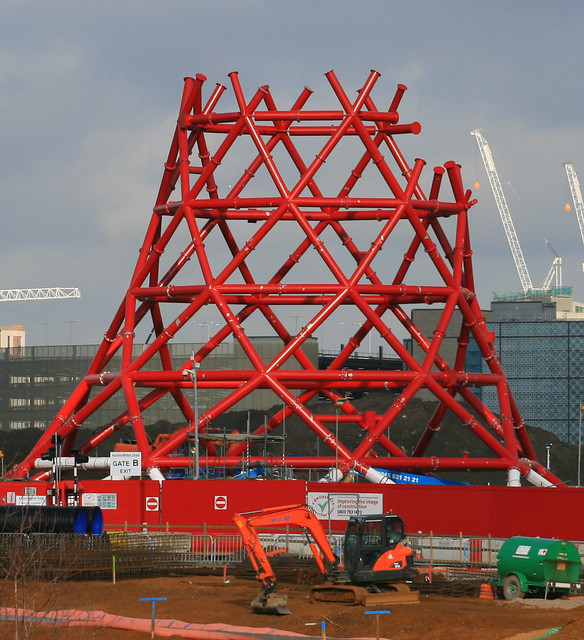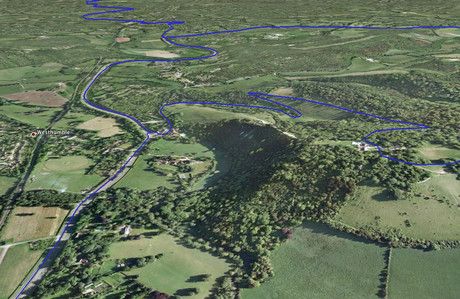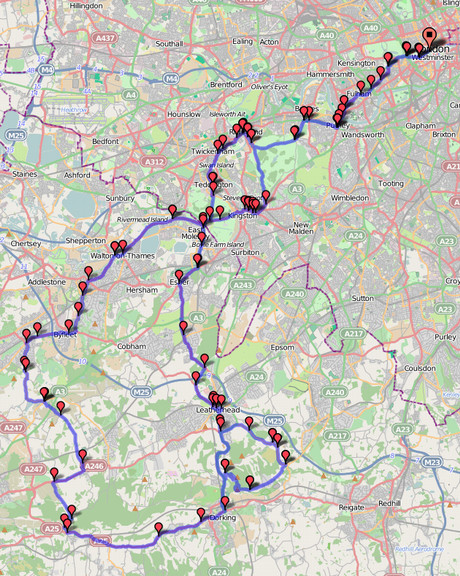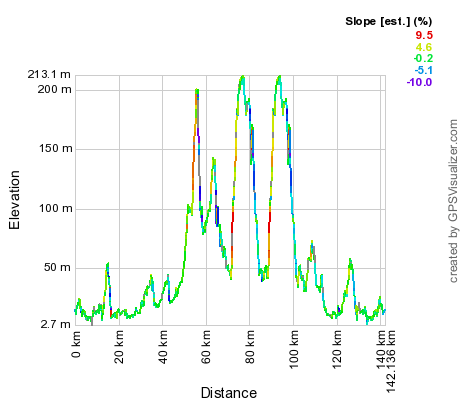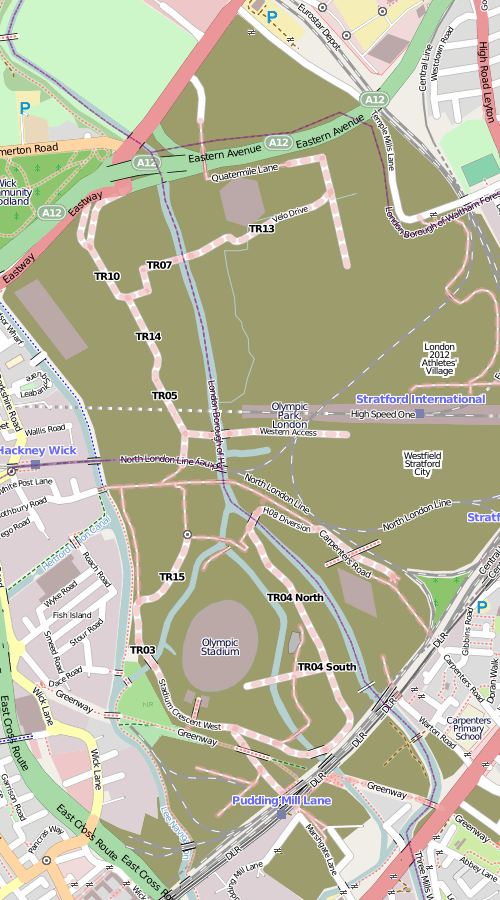I spotted this sign attached to the edge of the Eton Manor site, on the Eastway just north of the London 2012 construction site, last weekend:
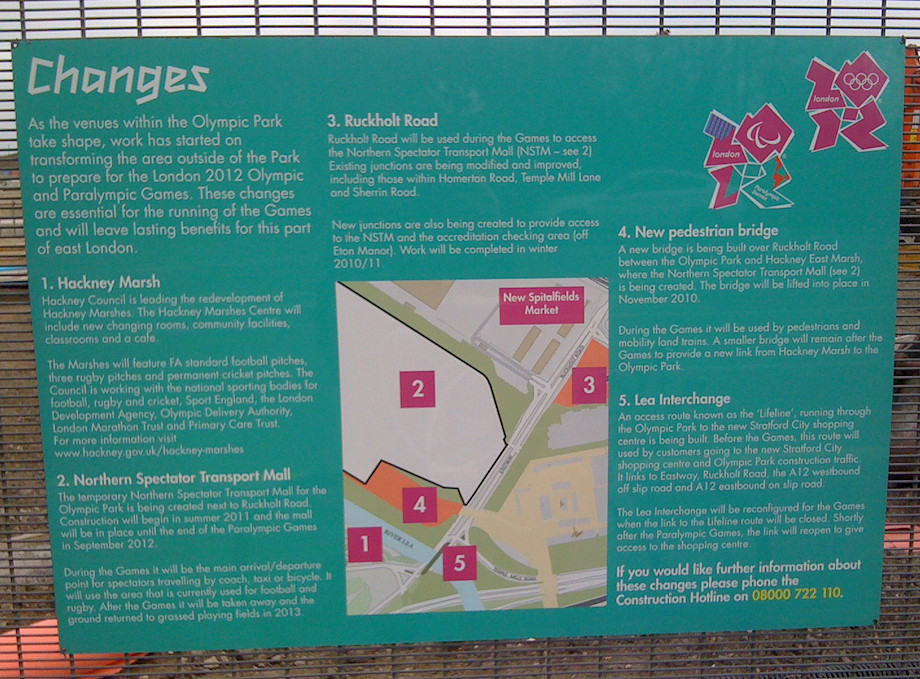
Lots of interesting information on here. As well as the “Hackney Marshes Centre” (aka South Marshes Community Hub) and the “Northern Spectator Transport Mall” (aka East Marsh) which I’ve covered before, there is mention of a new road – referred to as the “Lifeline” here, it is more specifically called the “Northern Retail Lifeline” in the Olympic Delivery Authority (ODA) planning documents I’ve dug up.
The Westfield Stratford City development was planned before the Olympics were awarded to London, and it always intended to open in 2011. As it stands, the triangular site is surrounded on two out of three sides by the huge Olympic construction site, and so would have been rather difficult to access upon opening, except from Stratford, until the Olympic security fences start to come down in 2013. To alleviate this poor access, the ODA was apparently obliged to provide a special access route from Walthamstow, Hackney and the A12 to the north, through the Olympic building site, to Stratford City.
The planning documents reveal some interesting information about the road.
Firstly, and most disappointingly, should I want to cycle over to Waitrose (this will not be the Stratford I know!) from Hackney Wick, I won’t be able to.
“NRL will only be for motor vehicles no larger than ‘4×4/SUV’ type vehicles. Furthermore, neither public transport nor pedestrians nor cyclists will be permitted”
Boo!
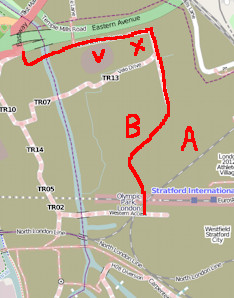 The road seems to start at the A12 junction, swinging sharply east and passing north of the newly completed Velodrome (V) and BMX track (X), before heading down to the Athlete’s Village (A). It then goes around the village boundary in an anticlockwise direction, passing the fluted white Basketball Arena (B) before heading straight down to join the Stratford City boundary. You can see much of the route in the plan here. I’ve drawn what I think is the whole route, on an OpenStreetMap on the right – also contains data CC-By-SA OpenStreetMap contributors.
The road seems to start at the A12 junction, swinging sharply east and passing north of the newly completed Velodrome (V) and BMX track (X), before heading down to the Athlete’s Village (A). It then goes around the village boundary in an anticlockwise direction, passing the fluted white Basketball Arena (B) before heading straight down to join the Stratford City boundary. You can see much of the route in the plan here. I’ve drawn what I think is the whole route, on an OpenStreetMap on the right – also contains data CC-By-SA OpenStreetMap contributors.
At the north end of the road,
“The northern vehicle screening area, adjacent to the A12 Lea Interchange, will stop and check traffic” … “The security guard will indicate whether a vehicle has been selected by hand held signals and a display board.”
This sounds fairly involved, but in fact the security arrangements for Canary Wharf are rather similar and this hasn’t stopped it being rather popular.
There might be some bad news if you are disabled, as:
“The vehicle height restrictors will match the Stratford City car park restrictors of 2.2m. However, Stratford City allow 2.7m high vehicles on the ground floor for high sided disabled vehicles so these will not be able to exit or enter via the NRL.”
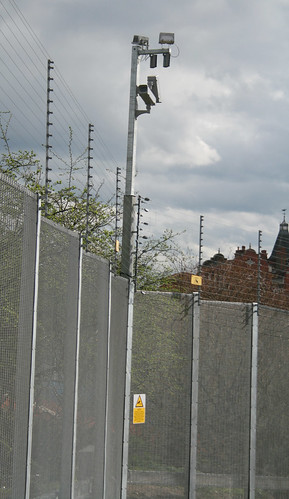 Once you are on the Lifeline road, don’t think about stopping for some nice close-up photos of the Velodrome, as this is not designed to be a welcoming road. The fence on either the side of the road:
Once you are on the Lifeline road, don’t think about stopping for some nice close-up photos of the Velodrome, as this is not designed to be a welcoming road. The fence on either the side of the road:
“will be 3.6m high and does not include the standard power topping implemented on the Outer Perimeter Fence (OPF) across the majority of the Park.”
The “power topping” is a slightly euphemistic way of describing electric fences. Presumably the security checkpoints make the Lifeline a “partially secure zone” which is why they are deemed not required here.
Also:
“CCTV cameras will be mounted on extended fence posts every 40m at a height of 5.8m”
The road will open with Stratford City this autumn and then close again in June next year for the “Games lock down”, before presumably reopening while the rest of the park get transformed into post-Games mode.
The entrance to the Lifeline appears to be under intense construction at the moment – the Eastway road is a bit of a mess. East-bound cyclists have to walk a considerable distance along the pedestrian footpath. The Eastway is an important cycle link between Hackney and Leyton. It is set for improvement too though – I spotted another application for a dedicated cycle and footbridge further along to the east. The west-bound route is also a real mess currently, with a lot of weaving around various bits of construction – or braving it on the dual-carriageway.
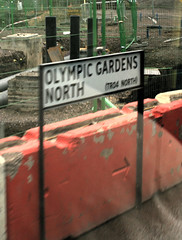 Some more interesting planning documents I found are this one which maps out the internal roads of the Olympic Park, and lists their names – Stadium Gardens, Handball Approach etc. Also, this letter outlines the plans for the park area west of the velodrome – the “North West Parklands”. Originally this was going to be a dramatic double crossing of the river by the cycle track – part of the “Velo Park”, but now, with the track being somewhat downgraded and placed east of the Velodrome, this is going to be more traditional open space, an “interim landscape zone” with presumably the eventual intent to build. There is a nice map here.
Some more interesting planning documents I found are this one which maps out the internal roads of the Olympic Park, and lists their names – Stadium Gardens, Handball Approach etc. Also, this letter outlines the plans for the park area west of the velodrome – the “North West Parklands”. Originally this was going to be a dramatic double crossing of the river by the cycle track – part of the “Velo Park”, but now, with the track being somewhat downgraded and placed east of the Velodrome, this is going to be more traditional open space, an “interim landscape zone” with presumably the eventual intent to build. There is a nice map here.
[Update: The somewhat depressing (in that apparently nothing good is ever done on site) Games Monitor blog spotted this a while back.]
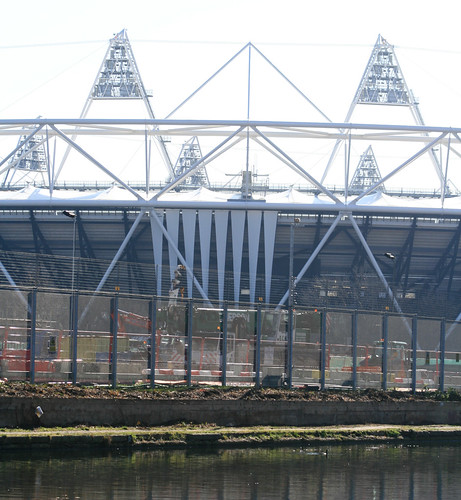
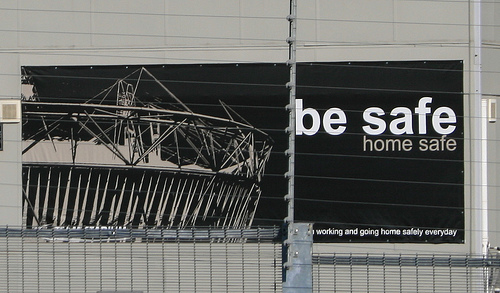
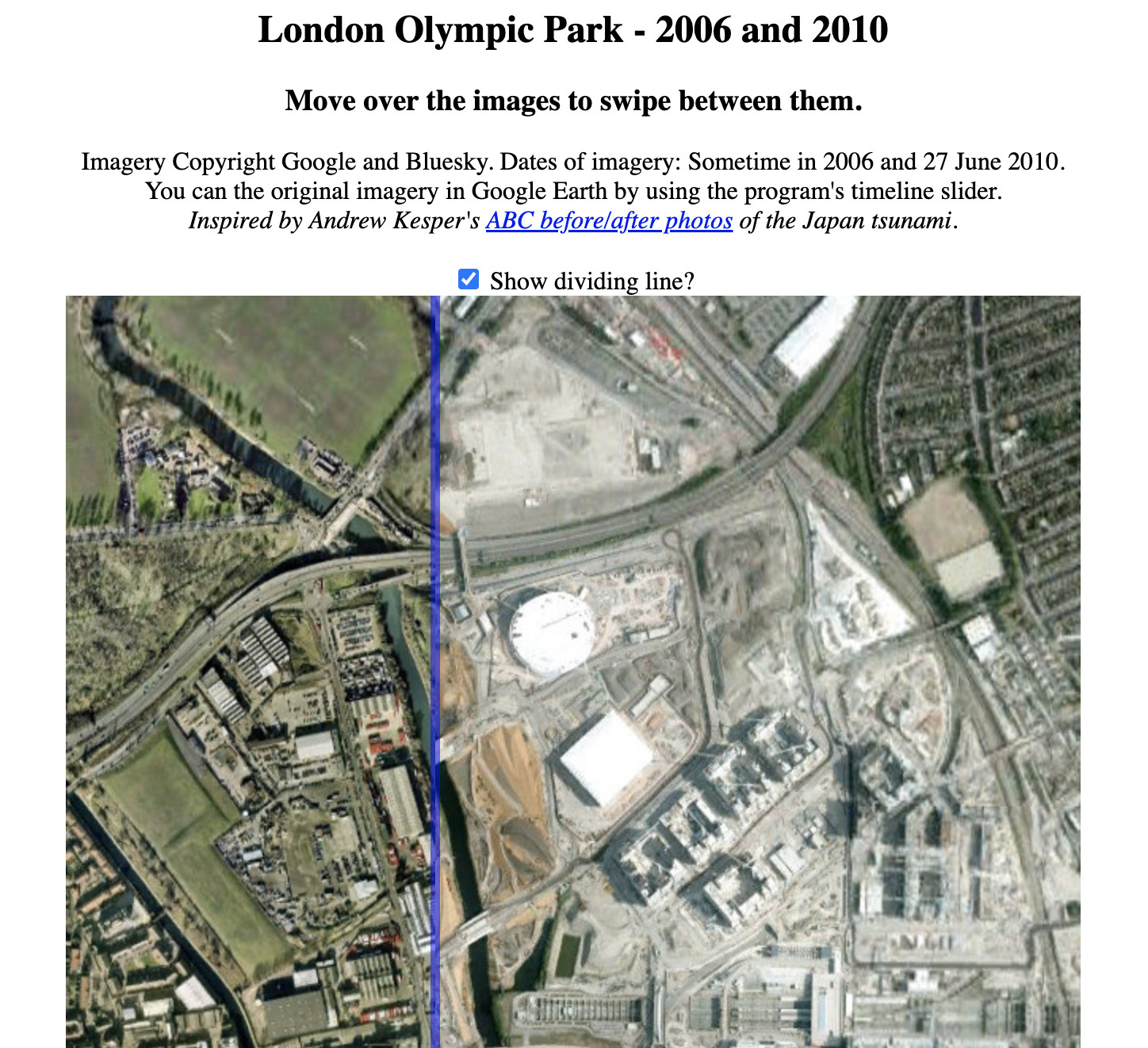

 The road seems to start at the A12 junction, swinging sharply east and passing north of the newly completed Velodrome (V) and BMX track (X), before heading down to the Athlete’s Village (A). It then goes around the village boundary in an anticlockwise direction, passing the fluted white Basketball Arena (B) before heading straight down to join the Stratford City boundary. You can see much of the route in the
The road seems to start at the A12 junction, swinging sharply east and passing north of the newly completed Velodrome (V) and BMX track (X), before heading down to the Athlete’s Village (A). It then goes around the village boundary in an anticlockwise direction, passing the fluted white Basketball Arena (B) before heading straight down to join the Stratford City boundary. You can see much of the route in the  Once you are on the Lifeline road, don’t think about stopping for some nice close-up photos of the Velodrome, as this is not designed to be a welcoming road. The fence on either the side of the road:
Once you are on the Lifeline road, don’t think about stopping for some nice close-up photos of the Velodrome, as this is not designed to be a welcoming road. The fence on either the side of the road:  Some more interesting planning documents I found are
Some more interesting planning documents I found are 